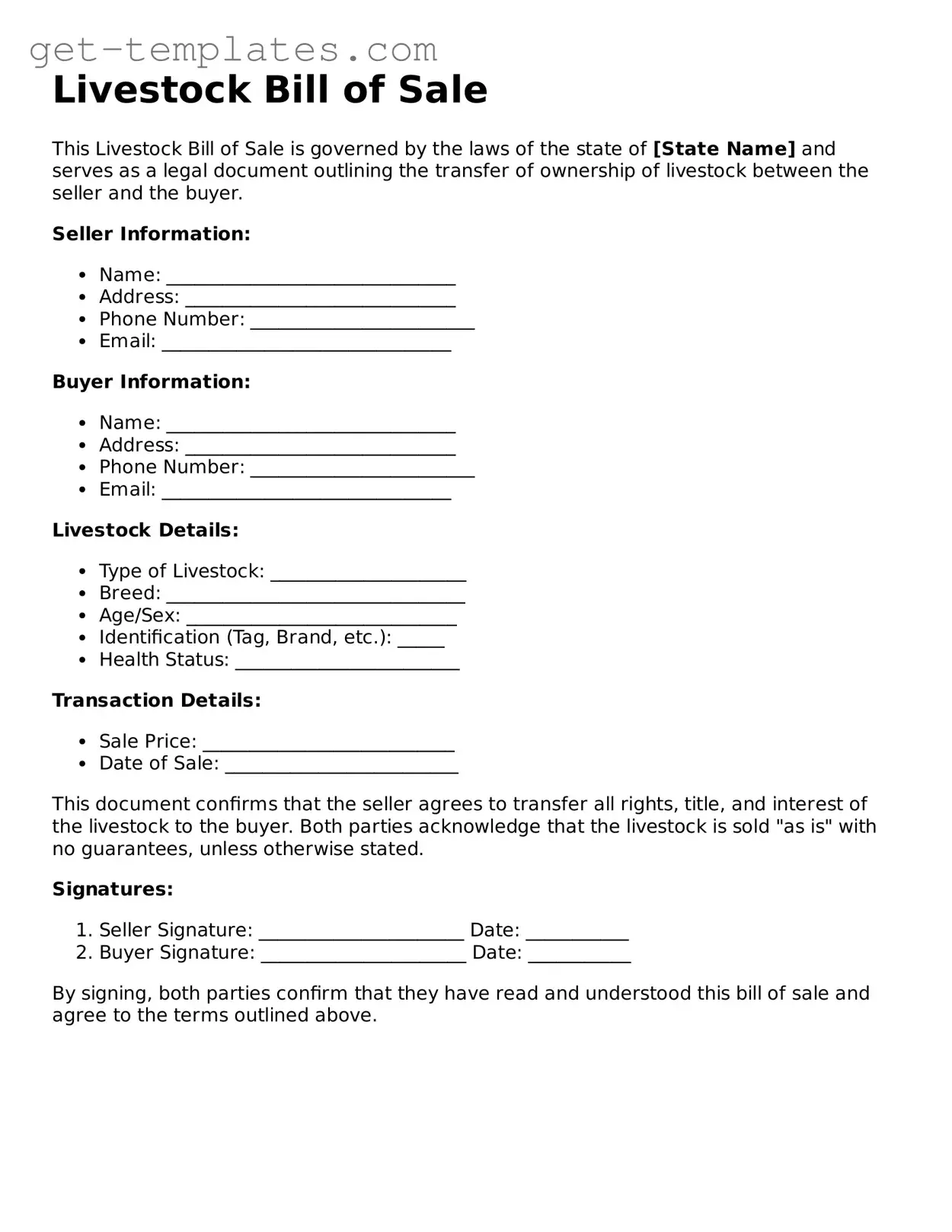A Livestock Bill of Sale form is a legal document that serves as proof of the transfer of ownership of livestock from one party to another. It typically includes details about the animals being sold, such as their breed, age, and any identifying marks. This form is essential for both buyers and sellers to ensure that the transaction is documented and can help avoid disputes in the future.
Why is a Livestock Bill of Sale important?
This document is crucial for several reasons:
-
It provides legal protection for both the buyer and seller by documenting the terms of the sale.
-
It helps establish the history of ownership, which can be important for health records and breeding purposes.
-
It may be required for tax purposes or to comply with local regulations.
A comprehensive Livestock Bill of Sale should include the following information:
-
The names and addresses of both the buyer and seller.
-
A detailed description of the livestock being sold, including breed, age, sex, and any identification numbers or markings.
-
The sale price and payment terms.
-
The date of the sale.
-
Any warranties or guarantees regarding the livestock's health or condition.
Yes, once both parties sign the Livestock Bill of Sale, it becomes a legally binding contract. This means that both the buyer and seller are obligated to adhere to the terms outlined in the document. However, the enforceability may depend on state laws and the completeness of the information provided in the form.
Can I create my own Livestock Bill of Sale?
Absolutely. While there are templates available, you can create your own Livestock Bill of Sale as long as it includes all the necessary information. Ensure that the document is clear, concise, and includes signatures from both parties. It’s advisable to have a witness or notary public present to further validate the transaction.
What if there are disputes after the sale?
In the event of a dispute, the Livestock Bill of Sale serves as a key piece of evidence. It can clarify the terms of the sale and the responsibilities of both parties. If issues arise, it may be beneficial to seek mediation or legal advice to resolve the matter amicably.
Are there any specific state requirements for a Livestock Bill of Sale?
Requirements can vary by state. Some states may have specific regulations regarding the sale of livestock, including the need for health certificates or registration documents. It’s important to check local laws to ensure compliance and to include any additional information that may be necessary for your state.
